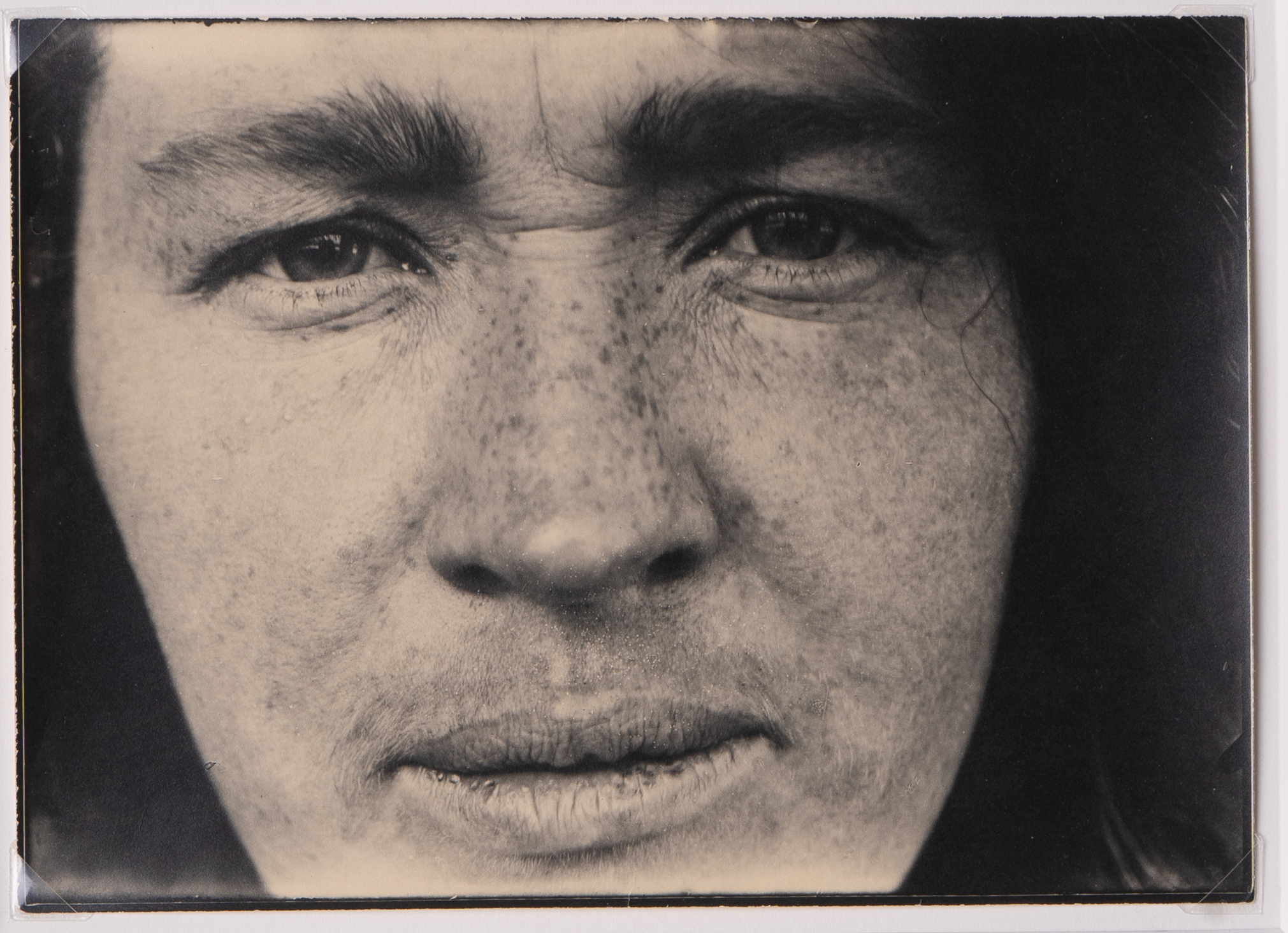Stanisław Ignacy Witkiewicz
The Vital Innards of The Individual
Photographs 1900–1923
12.06–25.09.21
Years 1912-1914 are the moment of Witkacy’s birth, the artist reaches maturity, becomes an autonomous individual independent of his father – Stanisław Witkiewicz. The result of this frantic search for the vital innards of the individual are the first tightly cropped images in the history of art. Photographing such tightly cropped close-ups of faces with the equipment originally owned by the artist was not possible, so in 1912, to fulfill his artistic intentions, Stanisław Ignacy Witkiewicz decided to modify the lens, about which he informed Helena Czerwijowska in a letter: “For two weeks I have had a camera to which Helman attached that lens using a water pipe.”
Witkiewicz uses uncompromising approaches to framing and shaping portrait compositions. The twenty-something artist seeks for the truth about his closest relatives, lovers and friends. He often explores people from his closest environment “in a photographic way”, showing only parts of a person’s physique. Skilful use of photography’s key tools of visual communication enhances the dramatic impression of a scene and intensifies the feeling of menace. In the photographic works from the beginning of the 20th century, Witkiewicz creates images which are atypical and disturbing at the same time. As a consequence, metaphysical portraits are being created. The gaze of the characters is suspended in a void, the faces are deprived of any grimaces, often even the context of the interior or the hairstyle is being omitted. Witkiewicz consciously renounces embellishment, or any attributes, to the extent that even gender becomes a secondary or even unimportant matter.
Witkacy has also experimented with different types of prints of a chosen frame, which were prepared by him in different ways at each stage of his work in the darkroom. The degree of saturation with blacks and the high contrast of the images may have corresponded with the narrative about the figure he depicted, as it was the case with the photographs taken of Jadwiga Janczewska, Witkacy’s would-be fiancée, who committed suicide in 1914. Softly printed portraits of Janczewska, full of intense light and the whiteness of photographic paper beating from the figure, were taken after the death of the loved one – they differ greatly from the prints made from the same negative material, but during her lifetime. It is symptomatic that Witkacy later wrote in Insatiability that photography may cause some reluctance because of the medium’s capacity to capture what we might not want or should be looking at.
Witkiewicz proves to anticipate the very phenomena we know today from American photography. Richard Avedon (1923-2004) or Bruce Gilden (b. 1946) liked to approach their models extremely closely. However, Witkacy introduced this bold strategy to photography over half a century earlier than the artists mentioned above.
Works
| Status | Title | Year | Technique | Dimensions | |
|---|---|---|---|---|---|
| Loading… |

|
Anna Oderfeld | c. 1912 | gelatin silver print on photographic paper | 17.5 × 12.7 cm |
| Loading… |

|
Anna Oderfeld | c. 1912 | gelatin silver print on photographic paper | 17.5 × 12.6 cm |
| Loading… |

|
Artur Rubistein | c. 1913-1914 | gelatin silver print on photographic paper | 17.8 × 12.9 cm |
| Loading… |

|
Autoportret | c. 1912 | gelatin silver print on photographic paper | 17.5 × 12.7 cm |
| Loading… |

|
Autoportret | c. 1912 | gelatin silver print on photographic paper | 21.6 × 14.9 cm |
| Loading… |

|
Bez tytułu | c. 1912 | gelatin silver print on photographic paper | 17.8 × 12.9 cm |
| Loading… |

|
Helena Czerwijowska | c. 1912 | gelatin silver print on photographic paper | 17.8 × 12.7 cm |
| Loading… |

|
Helena. Ja photo | c. 1912 | gelatin silver print on photographic paper | 17.9 × 12.8 cm |
| Loading… |

|
Helena. Ja photo | c. 1912 | gelatin silver print on photographic paper | 18 × 13 cm |
| Loading… |

|
Jadwiga Janczewska | c. 1913 | rubber technique | 17.1 × 12.7 cm |
| Loading… |

|
Jadwiga Janczewska | c. 1913 | gelatin silver print on photographic paper | 17.8 × 12.8 cm |
| Loading… |

|
Jadwiga Janczewska | c. 1912 | gelatin silver print on photographic paper | 20.4 × 14.8 cm |
| Loading… |

|
Jadwiga Unrug Witkiewicz | c. 1923 | gelatin silver print on photographic paper | 17.8 × 12.8 cm |
| Loading… |

|
Maria Witkiewicz | c. 1912 | gelatin silver print on photographic paper | 12.8 × 17.9 cm |
| Loading… |

|
Maria Witkiewicz | c. 1912 | gelatin silver print on photographic paper | 12.3 × 17.5 cm |
| Loading… |

|
Tadeusz Langier | c. 1912 | gelatin silver print on photographic paper | 17.8 × 12.7 cm |
| Loading… |

|
Tadeusz Langier | c. 1912 | gelatin silver print on photographic paper | 17.6 × 12.3 cm |
| Loading… |

|
Tadeusz Langier | c. 1912 | gelatin silver print on photographic paper | 13 × 17.9 cm |
| Loading… |

|
Wanda Illukiewicz | c. 1912 | gelatin silver print on photographic paper | 17.4 × 12.4 cm |
| Loading… |

|
Wanda Illukiewicz | c. 1912 | gelatin silver print on photographic paper | 17.4 × 12.6 cm |




